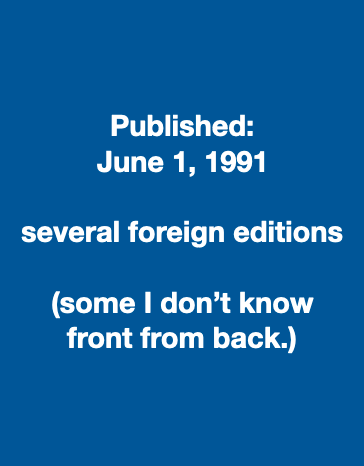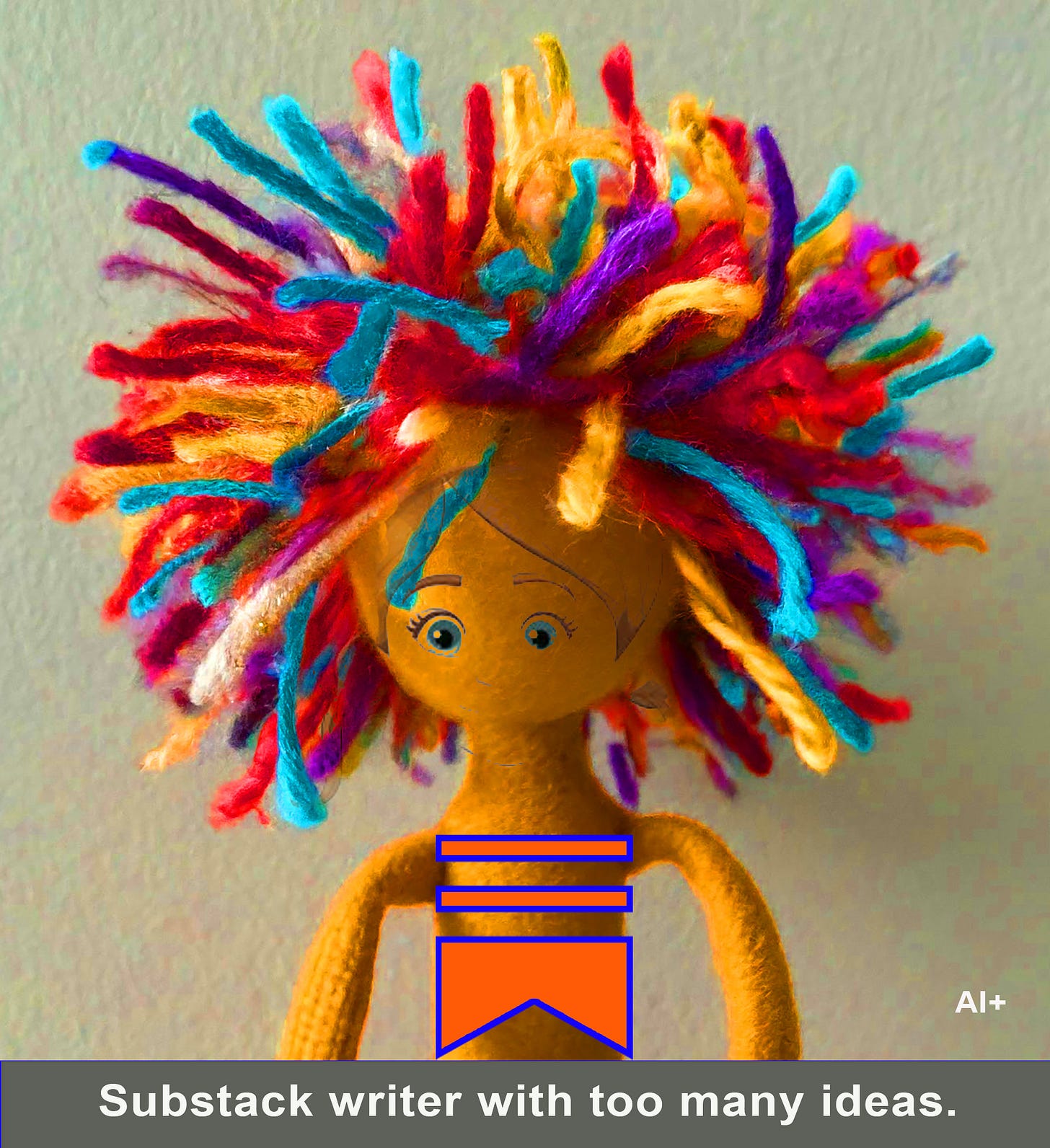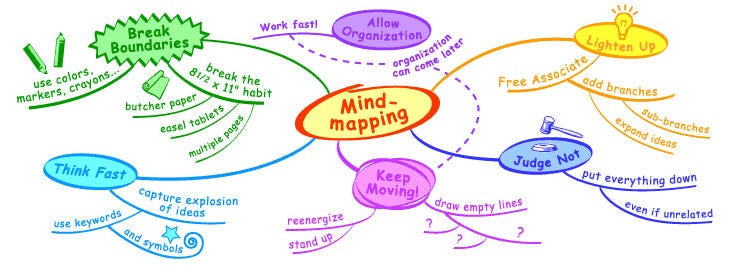Warning!! Total biased opinion following. What I know about the publishing industry would fit into a thimble, so read the following with that in mind.
Some of you already know this, but I didn’t until I experienced it. There is such a thing as a book that doesn’t hit the best-seller lists but does well over time. I was told it’s called a “classic bestseller” … mind you, not a “classic” nor a “best seller” but one of those books that hits the right niche at the right moment and just keeps chugging along. Like my book on mindmapping.



My first book has sold somewhere in the neighborhood of 170,000 copies … over 33 years … and no, it did not move the needle of my financial status more than an iota. It did open some lovely doors, however, and changed my life dramatically. It is probably the primary reason I’m here on Substack today.
All of that aside, the primary reason for posting this is that it’s a really good tool and I was the first author to put out a book about it and talk about its many uses. Others have claimed they “invented” it and one even trademarked the term in an effort to keep me from publishing my book. However, I’ve traced the term back to the Evelyn Woods Reading Dynamics days in the mid 1940s.
Actually, I believe it’s a natural way of thinking and has probably been used for as long as people have been thinking symbolically. Anyway, history aside, it’s still an excellent tool for thinking of any sort and I believe it deserves its status as our #2 Messy Organizatiol Tool.
Wordsmithing is the tip of the writing iceberg.
Supporting all those
, -ing, and the plethora of writer advice posts, there’s thinking … grappling with ideas, facts, experiences, thoughts, and feelings in order to synthesize an unseen world into a sun-sparkled thousand-word post that enlightens, enchants, engages, and emboldens a potential reader.Mindmapping is where that messy thinking field starts to come into focus. Start with a blank sheet of paper, put your subject in the center of the page and draw a circle around it (or a square, rectangle, rabbit, dodecahedron, Substack logo, or … you get the idea.) Branching off from that center, add short word tags to ideas you’ve already had, the stupid ones that pop into your head, the ones you wish made sense, etc. After that, just keep going. This isn’t your nice, neat, sensible, enlightening post … this is your pile of possibilities. Pick what calls to you and be off.
Mindmapping completely opened up my thinking. I was in my early thirties, chafing under my life as a management accountant. (And, yes, I know how to “cook the books” although, in today’s world, I’d be considered a naif.)
As I started learning and sharing this new (in the 1980s) thinking tool and began writing about it, an idea to create my own newsletter was born and the first 8-page monthly MindPlay was mailed, (handfolded and addressed with stamps to 400 unsuspecting people, some a few of whom became paid subscribers.)
Mindmapping (the book) is now very dated. We didn’t have computerized software in 1991, but the theory behind it is still valid (although a little heavy on the right brain/left brain stuff that was hot then) and the encouragement to use it for anything you’re planning or thinking about is useful.
Getting ready to post this, I noticed that I was out of copies of my first book child, so I just ordered a few and will be happy to send signed copies to 3 generous souls willing to donate $50+ to World Central Kitchen (see details in footer). Or, you can buy a new copy from amazon for $15.13 … or a used one even cheaper. Or, google around for a zillion details on how to “do” mindmapping. (The time would be better spent just messing around with it until you get the hang of it yourself.)
PS … for publishing industry nerds:
Berkley Books (publisher of Mindmapping) began as an independent company in 1955. It was founded as "Chic News Company" by Charles Byrne and Frederick Klein, who had worked for Avon; they quickly renamed it Berkley Publishing Co. The new name was a coinage, combining elements of their surnames, unrelated to either the philosopher George Berkeley or Berkeley, California.
In January 2016, Berkley was merged into Penguin's Putnam/Dutton.
I published two books with Berkley; I liked the second book better (Transformation Thinking) … it was remaindered (kiss of death term and fountain of all cheap tables in front of bookstores.)
And, alas, in the Wikipedia list of notable authors published by Berkley, I am not listed. And, no, my long history with Berkley would probably not be considered an “in” nor even prompt a returned phone call. Thus is the state of our publishing world today. However … we have Substack … and we have Notes.
Series links in case you missed one:







Sometimes a little context adds value. I bought and used Mindmapping in 1991. I'm glad I had a lot of experience with mind mapping before hyperlinks and Building a Second Brain--and now ChatGPT, took over the personal knowledge management world. Generations coming up behind me will totally miss the development of neural pathways in the brain that come with exercises like doing math without a computer, writing without a spell checker or grammar checker, cursive writing, and reading a map you bought at the next gas station on your way to not knowing where you are. Peter Drucker provided hundreds of truths about business and careers and the one I notice which bears out over time is this one: The person who has never worked in a traditional office environment, with many others, with mentors, with an office culture, and perhaps in a large building with other companies, will struggle as an entrepreneur or one-person monopoly. They lack the context of work and wisdom.
Sorry but what popped into my head as I read this was, if you try to map my mind you would end up lost in a swamp because my mind is all over the place on a good day and in a swamp on a bad day